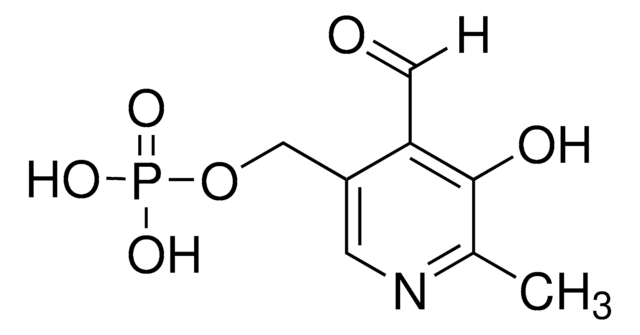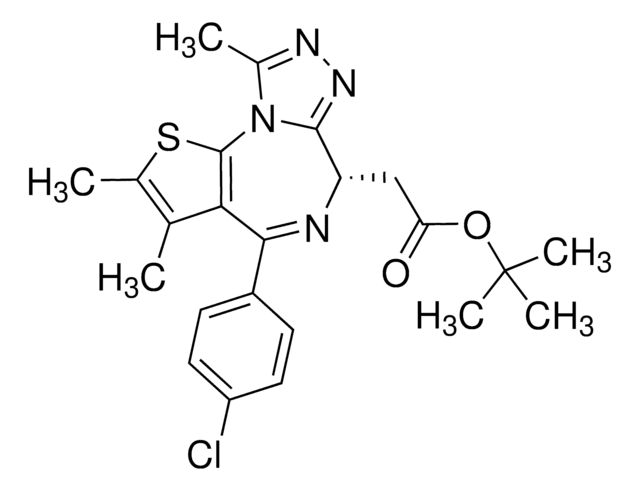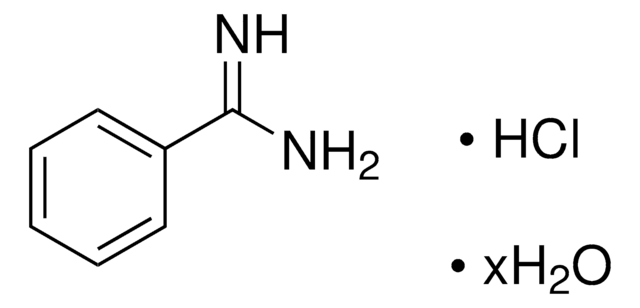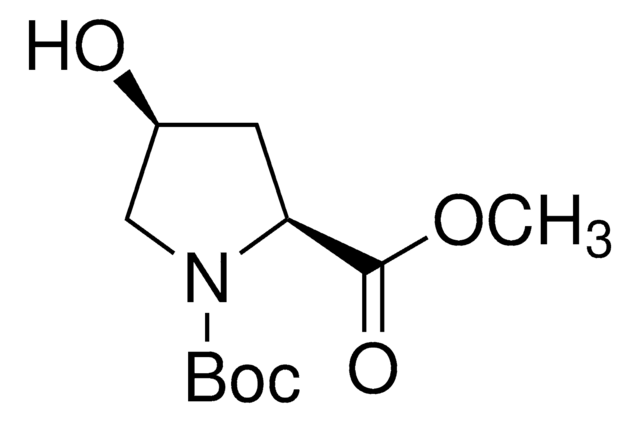Key Documents
H1637
cis-4-Hydroxy-L-proline
collagen synthesis inhibitor
Synonim(y):
(2S,4S)-(−)-4-Hydroxy-2-pyrrolidinecarboxylic acid, CHP
About This Item
Polecane produkty
Poziom jakości
Próba
≥98% (TLC)
Postać
powder
metody
ligand binding assay: suitable
kolor
white to faint yellow
mp
257 °C (dec.) (lit.)
Zastosowanie
peptide synthesis
ciąg SMILES
O[C@@H]1CN[C@@H](C1)C(O)=O
InChI
1S/C5H9NO3/c7-3-1-4(5(8)9)6-2-3/h3-4,6-7H,1-2H2,(H,8,9)/t3-,4-/m0/s1
Klucz InChI
PMMYEEVYMWASQN-IMJSIDKUSA-N
Szukasz podobnych produktów? Odwiedź Przewodnik dotyczący porównywania produktów
Zastosowanie
Działania biochem./fizjol.
Inne uwagi
Kod klasy składowania
11 - Combustible Solids
Klasa zagrożenia wodnego (WGK)
WGK 3
Temperatura zapłonu (°F)
Not applicable
Temperatura zapłonu (°C)
Not applicable
Środki ochrony indywidualnej
Eyeshields, Gloves, type N95 (US)
Certyfikaty analizy (CoA)
Poszukaj Certyfikaty analizy (CoA), wpisując numer partii/serii produktów. Numery serii i partii można znaleźć na etykiecie produktu po słowach „seria” lub „partia”.
Masz już ten produkt?
Dokumenty związane z niedawno zakupionymi produktami zostały zamieszczone w Bibliotece dokumentów.
Klienci oglądali również te produkty
Nasz zespół naukowców ma doświadczenie we wszystkich obszarach badań, w tym w naukach przyrodniczych, materiałoznawstwie, syntezie chemicznej, chromatografii, analityce i wielu innych dziedzinach.
Skontaktuj się z zespołem ds. pomocy technicznej









